Computing
Computing Intent at Holy Family
At our school we want our children to be active participants in a digital world by fostering children’s thirst for new experiences. Through teaching computing, we will build on prior learning and equip our children to be resilient in the ever changing technology world. Children will be independent and collaborative learners and learn how to use technology responsibly and safely to develop their love for computing in future life.
Computing 2025-2026
Year 1: iAlgorithm: iCompose
The year 1 children created algorithms using if statements. Here are a few of our performances.
Year 1: iAlgorithm: iCompose continued...
Year 1: iAlgorithm: iCompose continued...
Year 1: iAlgorithm: iCompose continued...
The children created algorithms for their partner. Then, their partner needed to predict the outcome of the algorithm.
The children explored giving instructions, then testing and debugging a simple algorithm.
Year 1: iAlgorithm: iSilly
In this lesson, the children learnt that programs execute by following precise and unambiguous instructions. Some of the children were 'silly robots' and only followed precise instructions.
In Reception, the children explored the idea of algorithms by following simple, step-by-step instructions to make a ham sandwich. They discussed and sequenced each part of the process, from spreading the butter to adding the ham and carefully putting the sandwich together. This practical activity helped the children understand that algorithms are just clear sets of instructions that need to be followed in order. The children enjoyed predicting what might happen if steps were missed or done in the wrong order, developing their problem-solving, listening, and early programming skills in a fun and meaningful way.
Year 1: iAlgorithm
The children learnt that algorithms are precise instructions that can be followed. They created simple algorithms for their robot friends.
Computing 2024-2025
The children create a pictogram using collected data.
The children use word processing software to create text. They also learnt about the keyboard and the different keys.
Children in Reception have been busy representing data using pictograms.
The nursery children have been using age related software to help them with their learning in maths.
The children engage in a carousel of activities producing text in different ways.
Year 2: iBlog
In Year 2, children generated messages to one another and explored how messages can be sent electronically.
In this lesson, the children have been understanding how to use basic navigation skills to browse the World Wide Web.
Year 3: iConnect
In this lesson, the children have been understanding what the internet is and that many computers are connected within it.
Childres recorded a sequence of instructions in a common format.
Year 6 - iLearn AI
Year 6 have been learning about Artificial Intelligence; how it is used, how it evolves and the positive impact it can have on our lives.
The children make predictions about where an object will be after executing an algorithm.
The children used logic and reasoning skills to predict the behaviour of a simple program.
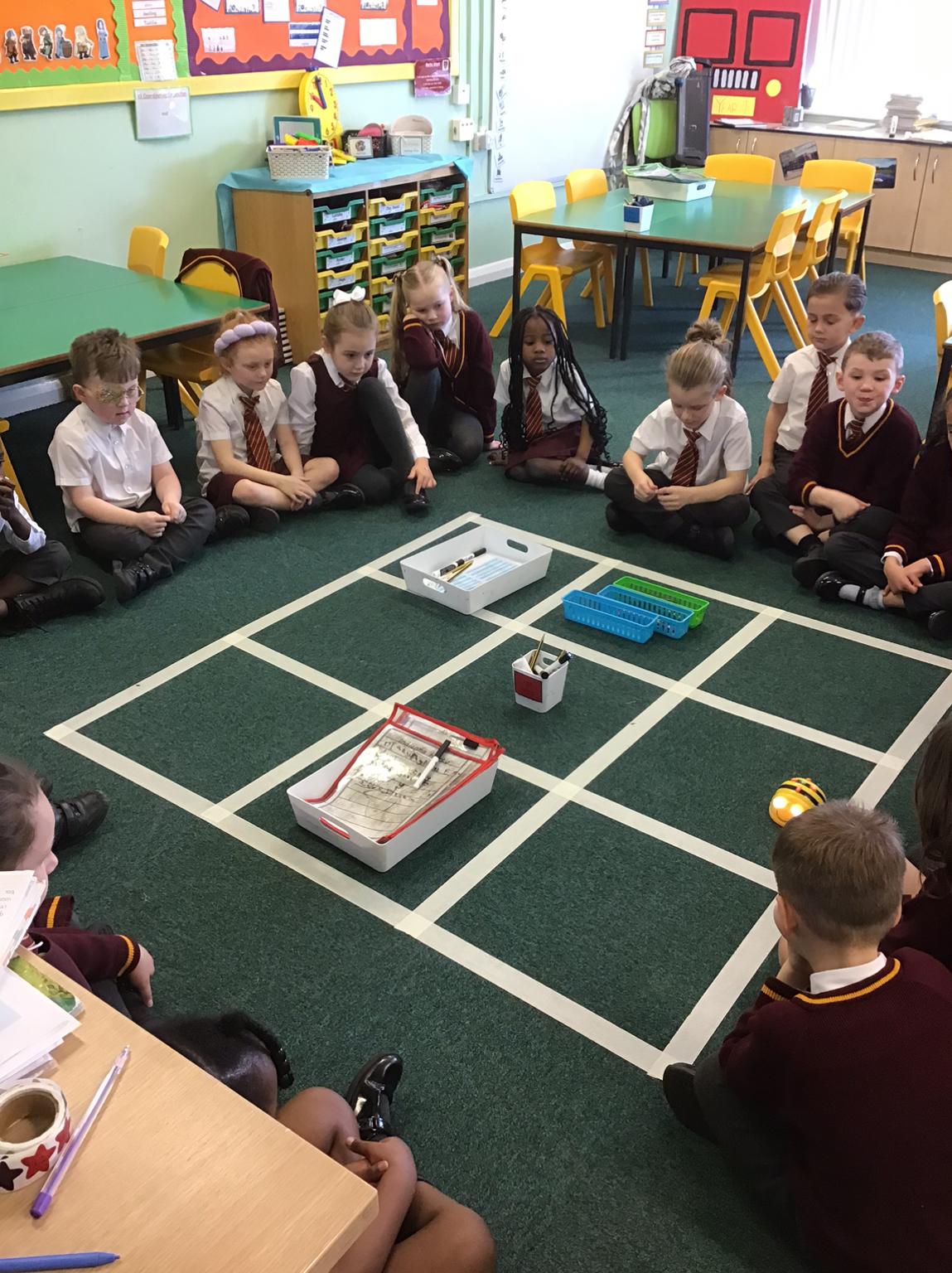
The children guided a programmable toy to where they want it to go.
In this lesson, Year 2 explored the World Wide Web and created a powerpoint to share their findings.
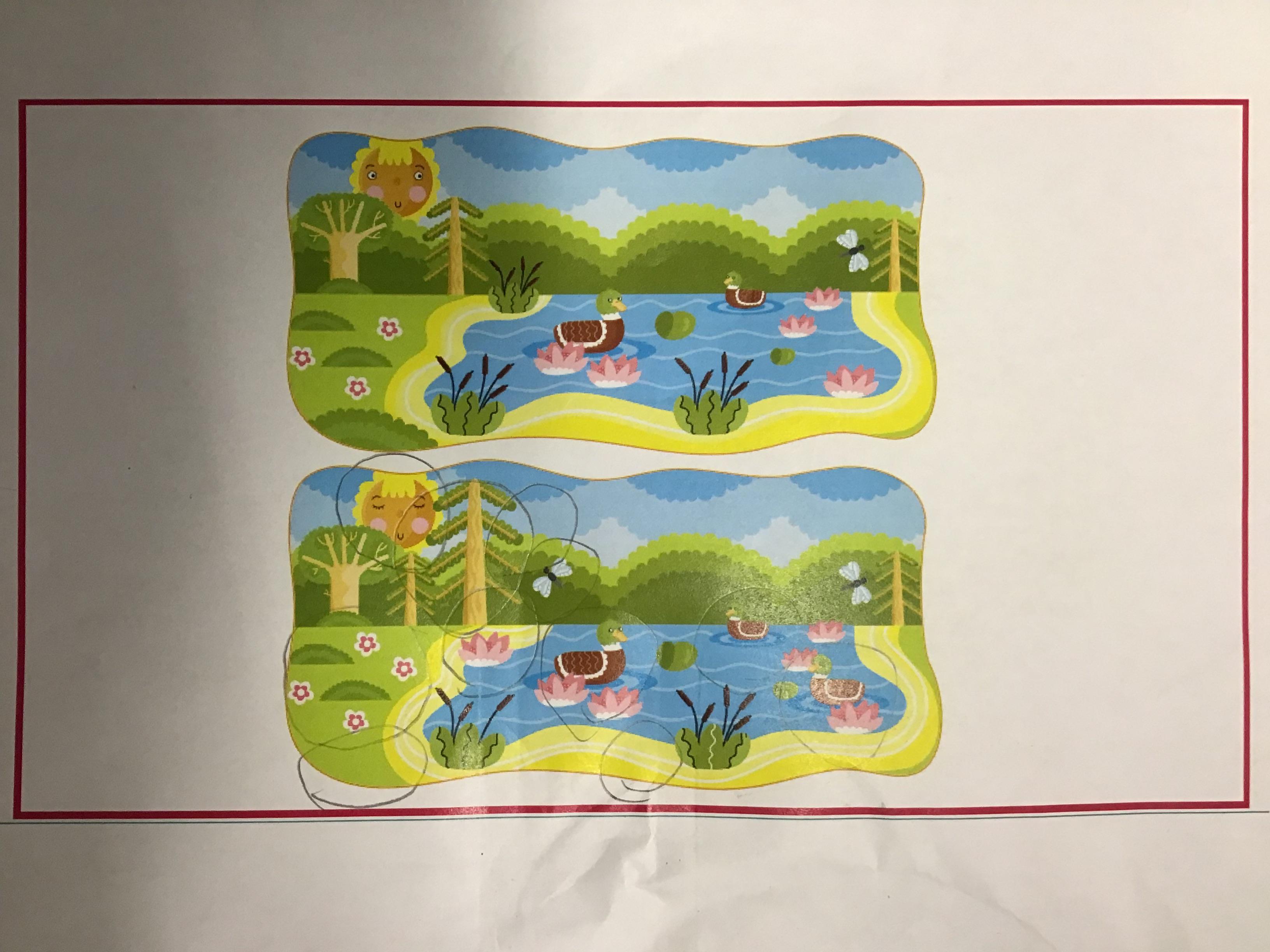
Children were able to talk about what is different and what is the same in a set of objects.
Year 6 - iData
In Computing, Year 6's topic was iData - children had to input data on a Microsoft Excel spreadsheet and learnt about different formulas...
In FS1 the children have enjoyed using the iPad to take pictures of the 'number 2'. The children spotted two aeroplanes in the sky and two friends standing together.
In this unit so far, the children have been learning about the safety measures that we can take to stay safe, and understand the potential consequences of sharing without consent.
Children in Reception designed a simple trail involving turns and linked this to Maths.
The children used software to create an image of a character from a nursery rhyme.
Year 1: iDraw: iCopy
The children created digital art in the style of an artist.
In this lesson, children used their scripted storyboards and 'scratchjr' app to create their animations.
The children drew shapes and filled them in to re-create a vector image.
Year 3: iNetwork
In this lesson, the children have been looking at lesson iConnect. The children have been understanding the key parts of a computer network, by working practically to send messages via a network switch. The children enjoyed echoing these roles.
Year 3: iNetwork
In this lesson the children have been understanding what a network is, and creating a map using draw tools.
Year 1: iDraw: iMark
The children explored how computers work and learnt that they can be used to represent real or imaginary environments, situations and scenarios.
Year 6 - iSafe
Year 6 knew how to use technology safely, respectfully and responsibly, recognise acceptable/unacceptable behaviour and know how to report concerns.
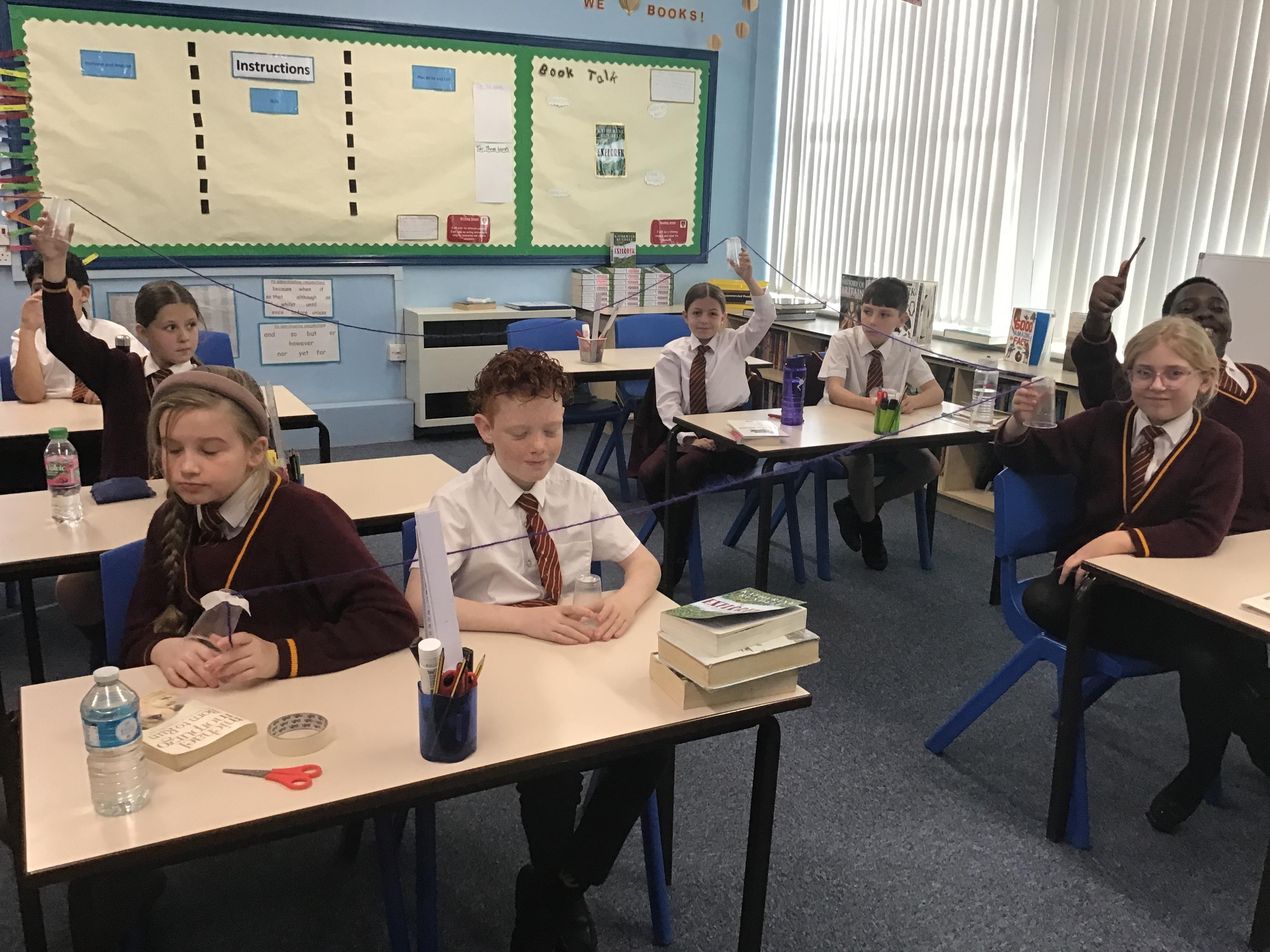
Year 6 understood computer networks including the internet; how they provide multiple services and the opportunities they provide for communication and collaboration.
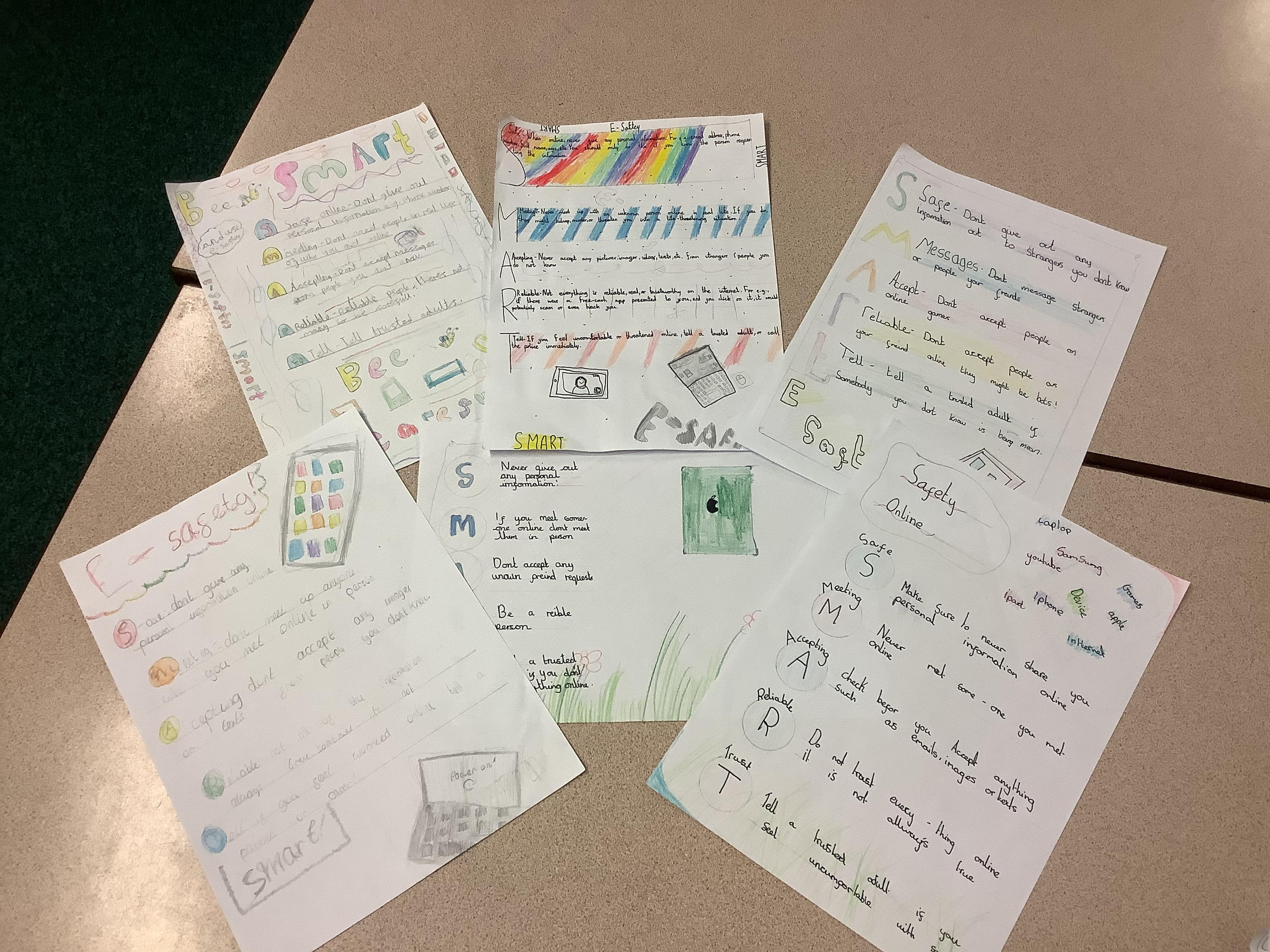
To understand how to be safe online, the children explored the SMART concept and created posters to show their understanding.
We watched the videos and discussed the importance of being safe online and how we can be safe using technology in school and at home.
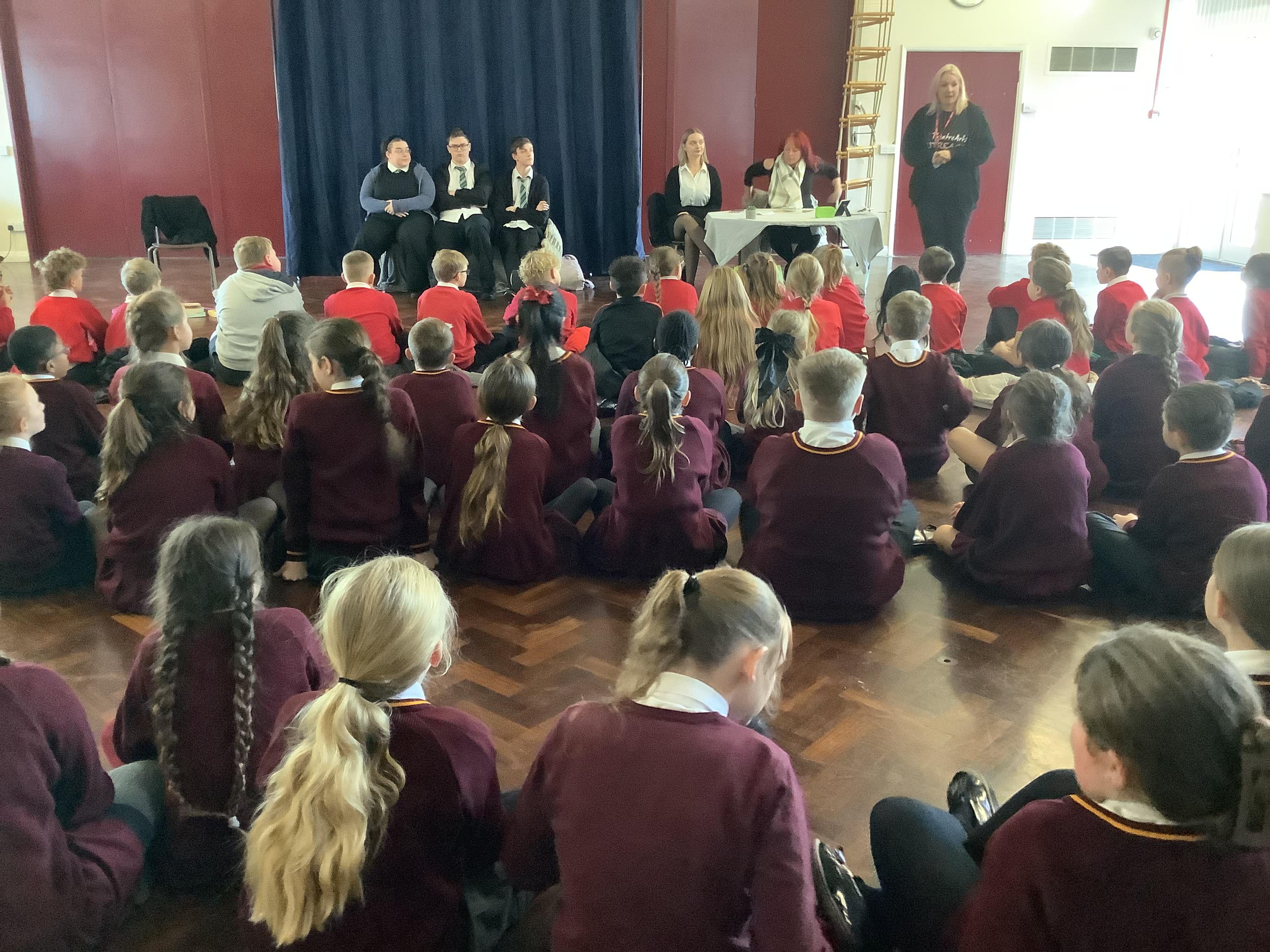
The children in year 5 and 6 were joined by Year 5 children from a local primary school to watch a NSPCC play. It was a fantastic performance with an important message about staying safe on online.
In this lesson, the children have been understanding that simulations help us to understand difficult concepts.
In this lesson, the children have been exploring the effect of changing variables in a simulation using them to make and test predictions.
Year 3: iSimulate
In this lesson, children have been understanding that computer simulations are guided by rules.
Year 3: iSimulate
In this lesson we have been understanding that computer simulations can represent real or imaginary situations.
In year 5, we started our topic of e-safety by exploring how they use technology and discussing the risks and benefits of various modes of communication. We then discussed the difference between personal and private information and who we can share that with.
Year 1: iModel
The children used digital drawing tools to create a storyboard of a game or story.
Year 4: idata
Year 4 have searched a data base to answer questions.
Year 4: idata
In computing, Year 4 have used excel to develop an understanding that storing information in an organised way helps answer questions.

In nursery we incorporate the use of ICT equipment in the children's imaginative play. It helps children to find out about the purpose of ICT in the 'real world'.
Year 5- i-Draw
In this lesson, the children in year 5 learnt how to zoom in and out to add details to graphical objects using Henri Matisse' Vegetables. They learnt how to use the online tools to change the order of layers in the drawing to add detail. Take a look at their creations.
Year 1: iModel
The children have been looking at how a computer can be used to model an environment where choices can be made. They played simple adventure games and made choices. They also looked at recognises what is real and what is not real in an adventure game.
Year one have been looking at how computers can be used to make choices. They complete the three bear task and dressed each bear. They even drew/wrote their choices to predict the outcome. They have investigated alternatives using the software.
Year 1: iModel
The children are developing an understanding that computers can show real events and things. The children explore how computer models work and learn that they can be used to represent real or imaginary environments, situations and scenarios.
Year 5- i-Draw
The children in year 5 had such a fun time using the computer program Sketchpad to create simple vector images out of shapes and lines and then using the online tools to duplicate, move, resize and rotate graphical objects on their pictures to create a scene of their choice.
Click on the link below to access this free online program.
Year 6 - iProgram
Year 6 really enjoyed planning and designing their own computer games...
In year 1, the children have been developing an understanding of conditions and outcomes. They created algorithms using instruments.
Year 1 created algorithms to build a tower. Their partner needed to predicting the outcome of an algorithm and then follow the instructions to see if they were correct.
Year 2 have been using Scratch to develop and follow simple algorithms.
Year 1 discussed the word algorithm and play the game 'Simon Says'. The children then tested and debugged a simple algorithm for the Beebot.
Reception children have learnt that nursery rhymes have a sequence. They worked together to identify all the key steps in each nursery rhyme.
Year 5- i-Program
To finish off their unit on programming, the children in year 5 used the computational concepts of sequence, selection, repetition and variables to program a computer game of their own using what they have learn about variables. They then tested each others games to debug their programs.
Year 4 have used scratch to detect and correct errors in a computer program. They have also used coding to remix and reuse to create new content.
Year 4 used ipads to understand that broadcasts can be used to change scenes in Scratch.
Year 4 have used scratch to understand that actions can be programmed to perform in synchronicity.
In year 1, the children were understanding that programs execute by following precise and unambiguous instructions. They played the silly robot game and created instructions for something they know well. Some created instructions for getting dressed and some for making sandwiches for example.
In this lesson, children in year 3 have been using iCreate, to import pictures from the internet or a computer software. The have combined images, sounds and movement to create their personal animation.
In computing, the children in year 5 were learning to program statements that make something happen in response to events on the screen. They also learnt about variables and why they are useful to make something happen in response to their value.
Year 3: iProgram
In this lesson, the children have been using iShape Up to predict the outcome of a simple algorithm, and using the repeat function to draw a 2D shape.
In this session the children were using ‘iMakeMusic’ to program the sprites to move to music, by using coding such as import, record, animate, repeat and loop.
Year 3: iProgram
In this lesson the children were learning how to animate their sprites to change costume with coding techniques such as sequencing, repeating and loop.
Year 5- iProgram
In computing, the children in Year 5 have been learning that a program can do different things when Boolean variables are true or false and then programmed statements to make something happen in response to events on screen. They used this skill to make sprites interact when they bump into each other on the program Scratch.
Year 3:Iprogram
In year 3 the children have been getting better at Imove, and creating a Scratch ‘sprite’ character, and using coding to program these to make them jump on screen.
Year 3: Iprogram
In year 3’s Iexplore lesson they have been exploring the different codes they can use to control the movement of their sprite. The children have used codes, motions and controls.
The children in Year 5 have been learning to recognise that computer programs contain graphics that move on x and y coordinates and when graphics turn, their movement is measured in degrees. They have demonstrated this using Scratch to program a sprite to walk backwards and forwards across a backdrop and then bounce on a trampoline.
Year 4- iprogram
In computing, Year 4 have used scratch to understand the need to reuse coding. They also understood how to improve their own codes by debugging it.




































































































































































































































































































































































































